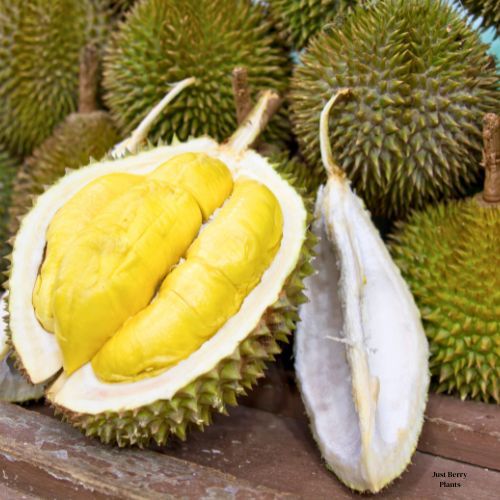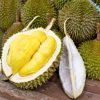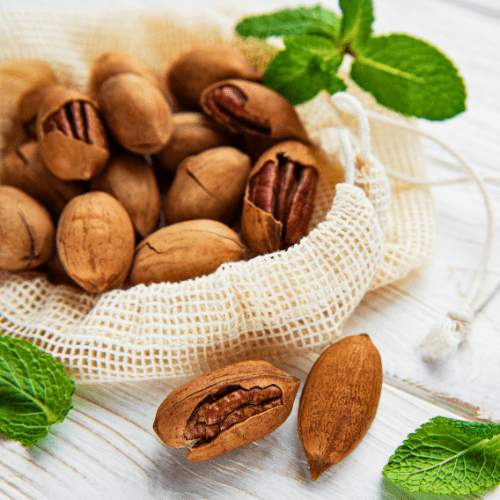Position
Full sun, at least 6 – 8 hours daily. However, it’s essential to note that the tree is not cold-hardy, so it must be protected in cooler areas during winter.
Soil
Deep, well-drained, loamy soil with pH 6–7
Watering
Regular, consistent moisture is not just crucial, it’s your responsibility for the plant’s health. Avoid waterlogging, as it can lead to root rot. Do not allow the roots to dry out, as this can cause the plant to wilt and die. Your attention to this detail will ensure the plant thrives.
Mulching
Add a thick layer of pine bark mulch, keeping it at least 20 to 30 centimeters away from the tree trunk (any closer may cause excess moisture and damage the trunk). This proactive step will retain the moisture in the soil and will prevent weeds from taking over, giving you control over the plant’s environment.
Fertilizing
Apply 1 teaspoon of our slow-release nitrogen-rich berry fertiliser every 4-5 months.
High potassium and phosphorus during the fruiting stage
Pruning
Pruning is not just a task, it’s a caring act for maintaining the health and shape of this plant. It’s best done in winter, during the dormant season, to remove dead wood and shape the tree. This process can also be used to keep the plant compact for smaller gardens, allowing you to control its size and shape.
Train the durian tree as an open center (vase shape) by pruning all inward growing branches, for good light penetration and air circulation. This shape allows sunlight to reach all parts of the plant, promoting healthy growth. It also improves air circulation, reducing the risk of fungal diseases. To achieve this, prune the tree to have a single, upright trunk with lateral branches growing outwards in a vase-like shape.
Pests & Diseases
Aphids, citrus psylla, red scale, citrus greening. Spraying regularly with Agricultural Neem Oil or Effective Microorganisms (EM Control ) will assist in either prevention or after the fact. If you already have aphids or mites, wash the tree with a harsh hosing, and when dry, spray with Neem oil or EM Control.
Practice good garden hygiene (remove fallen fruit and leaves).
Watch for root rot (if overwatered) and fungal infections during wet periods.
Harvesting
A durian fruit is ready to eat when its husk begins to crack and emit a strong, distinctive odor. Generally in late summer.
Fruits drop naturally when ripe; collected quickly to avoid damage.






